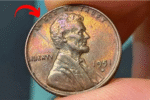The New Yamaha RX100 is not just a motorcycle – it is a phenomenon, a living memory, and an eternal symbol of power and speed. Introduced in the mid-80s, this two-stroke marvel took the Indian motorcycling scene by storm. For anyone who grew up in the 80s or 90s, the Yamaha RX100 was the definition of cool. With its unmatched engine note, raw acceleration, and simple mechanical layout, this machine soon became the heartthrob of a generation.
Even though it’s been decades since the last unit rolled off the production line, the Yamaha RX100 still captures the imagination of biking enthusiasts across the country. Let’s take a deeper look at what made this motorcycle so iconic and why it commands such loyalty even today.
Yamaha RX100 – Key Overview
| Feature | Details |
|---|---|
| Engine | 98cc, air-cooled, 2-stroke |
| Power | Approx. 11 HP |
| Gearbox | 4-speed manual |
| Weight | Around 100 kg (lightweight) |
| Top Speed | Around 100 km/h |
| Brakes | Front & rear drum brakes |
| Fuel Efficiency | 25-30 km/l (depending on tuning) |
| Suspension | Telescopic forks (front), swingarm (rear) |
| Production Years | 1985–1996 |
| Legacy | Cult classic, iconic sound and speed |
Yamaha RX100: Why was it so popular?
There’s a reason why the Yamaha RX100 is still spoken about with such reverence today. When it arrived in India in 1985, the country’s motorcycle landscape was dominated by commuter bikes – functional, reliable, but not very exciting. The Yamaha RX100 changed all that in one fell swoop (words used).
Its two-stroke engine was compact but powerful. With 11 horsepower in a bike weighing just 100 kilograms, it delivered a power-to-weight ratio unmatched at the time. This meant explosive acceleration, allowing riders to leave heavier, four-stroke bikes far behind at traffic lights.
But performance was just one side of the story. The Yamaha RX100 had a minimalist design that added to its appeal. It had no body panels or gimmicks – just clean lines, a curved fuel tank, chrome-finished fenders and a round headlamp that gave it a timeless, no-fuss look.
Youngsters loved it. Street racers tuned it. Travellers relied on it. The Yamaha RX100 catered to everyone, which is why its legacy is so strong even today.
Yamaha RX100: Superb engine and power delivery
The heart of the Yamaha RX100 is its 98cc, air-cooled, two-stroke engine. Despite being small in displacement by modern standards, it delivers remarkable power. What makes this engine special is its instantaneous power delivery. Unlike four-stroke engines that build up speed gradually, a two-stroke engine in the Yamaha RX100 delivers power in quick bursts.
This is why riders feel an adrenaline rush when they twist the throttle. You didn’t have to wait for power – it was just there, ready to go. The 4-speed manual gearbox complemented the engine perfectly, allowing for seamless and snappy shifts, giving the bike agility and punch that could put bigger bikes to shame. Whether navigating city streets or the open highway, the Yamaha RX100 felt responsive, nimble, and eager.
Handling, Brakes and Suspension
Light and nimble, the Yamaha RX100 was a dream to handle. Its low weight gave riders the confidence to weave through traffic and take tight turns with ease. Telescopic forks up front and swingarm suspension at the rear provided a good ride quality – perhaps not luxurious, but certainly solid and reliable.
Braking duties were handled by drum brakes at the front and rear. While they may not be comparable to modern disc brakes in terms of performance, for its time, the braking system on the Yamaha RX100 was more than adequate. Response was predictable, and stopping distances were reasonable for the speeds it could reach.
Even on less-than-perfect roads, the Yamaha RX100 never felt unstable or unsteady. It was a perfect balance of lightness, strength, and maneuverability.
Fuel Efficiency and Maintenance
For a bike known for speed and power, the Yamaha RX100 also offered decent mileage. It could return around 25-30 kmpl depending on the riding style and engine tuning. While this might seem modest today, back in the 80s and 90s, it maintained a fair balance between performance and economy.
Maintenance was another reason why the Yamaha RX100 gained legendary status. It was easy to fix, simple to understand, and didn’t require special tools. This made it a favorite among mechanics and DIY enthusiasts. Spare parts were affordable and widely available during its heyday, and many workshops became experts in tuning and modifying the RX100 for better performance.
Today, while spare parts are hard to find, there is still a vibrant community of collectors and mechanics that keep these machines alive.
Yamaha RX100: Cultural icon and racing legacy
Beyond its mechanical excellence, the Yamaha RX100 became a cultural icon. It was the favourite bike of college students, young professionals and even film heroes. Its distinctive exhaust note – a sharp, raspy rumble – was instantly recognisable and became part of its identity.
The Yamaha RX100 also had a long run in the Indian drag racing scene. Its responsive engine, tunability and lightweight frame made it a favourite choice for street racers. Tuned RX100s were often seen on unofficial racing circuits and drag strips, where they would outrun much bigger bikes due to their explosive acceleration.
In a way, owning a Yamaha RX100 wasn’t just about transportation – it was about attitude, personality and passion.
Yamaha RX100: Discontinuation and emission norms
Production of the Yamaha RX100 stopped in 1996. The main reason? Emission regulations. Two-stroke engines, despite their performance advantage, are known to emit more pollution than four-stroke engines. As India adopted stricter emission norms, Yamaha had no choice but to phase out the RX100.
The company tried to replace it with models like the RXG, RX135 and RXZ, but none could capture the magic of the original Yamaha RX100.
Is the Yamaha RX100 Still Worth Owning Today?
Absolutely. If you find one in good condition or restore it yourself, you get to witness a part of Indian motorcycling history. Restored RX100s often go for over ₹1,00,000, depending on their originality and condition. Collectors pay a premium for untouched models with original paint, chrome and engine components.
It is said that owning a Yamaha RX100 today requires dedication. The fuel consumption is not as good as a new bike, spare parts are scarce, and it may not be as comfortable as modern machines. But what it does offer is an unmatched riding experience. The feeling of freedom, nostalgia and raw connection with the road is something no modern bike can replicate.
Frequently Asked Questions (FAQ)
Question 1. Why was the Yamaha RX100 discontinued?
The RX100 was discontinued in the mid-90s due to the strict emission norms implemented in India. Its two-stroke engine could not comply with these new environmental standards.
Question 2. Is the Yamaha RX100 available in the market today?
Yamaha no longer manufactures the RX100, but you can find it in the second-hand market. Enthusiasts often restore them to good condition.
Question 3. How much does a used Yamaha RX100 cost now?
Prices vary widely. A functional model can cost ₹50,000-₹80,000, while a fully restored or rare original-condition RX100 can cost ₹1.5 lakh or more.
Question 4. Can the Yamaha RX100 be used for everyday riding?
Yes, but it needs care. The engine needs regular maintenance, and spare parts can be hard to find. It is better as a hobby or weekend bike.
Question 5. Will Yamaha ever bring back the RX100?
There are rumours, but nothing has been officially announced. Yamaha has expressed interest in reviving the spirit of the RX100, possibly with a four-stroke engine that meets modern emission norms.
Conclusion
The Yamaha RX100 isn’t just a machine – it’s a feeling. It’s a symbol of that golden age when motorcycling was raw, untamed and connected directly to the rider’s soul. Its legacy is kept alive by enthusiasts who lovingly restore and maintain their bikes, and every rider who has ever felt the excitement of its two-stroke roar.
Even in today’s world of sophisticated electronics and silent electric bikes, the Yamaha RX100 stands as a reminder of what riding used to be. Pure. Loud. Free.
If you ever get the chance to ride it – don’t miss it. Because once you ride a Yamaha





